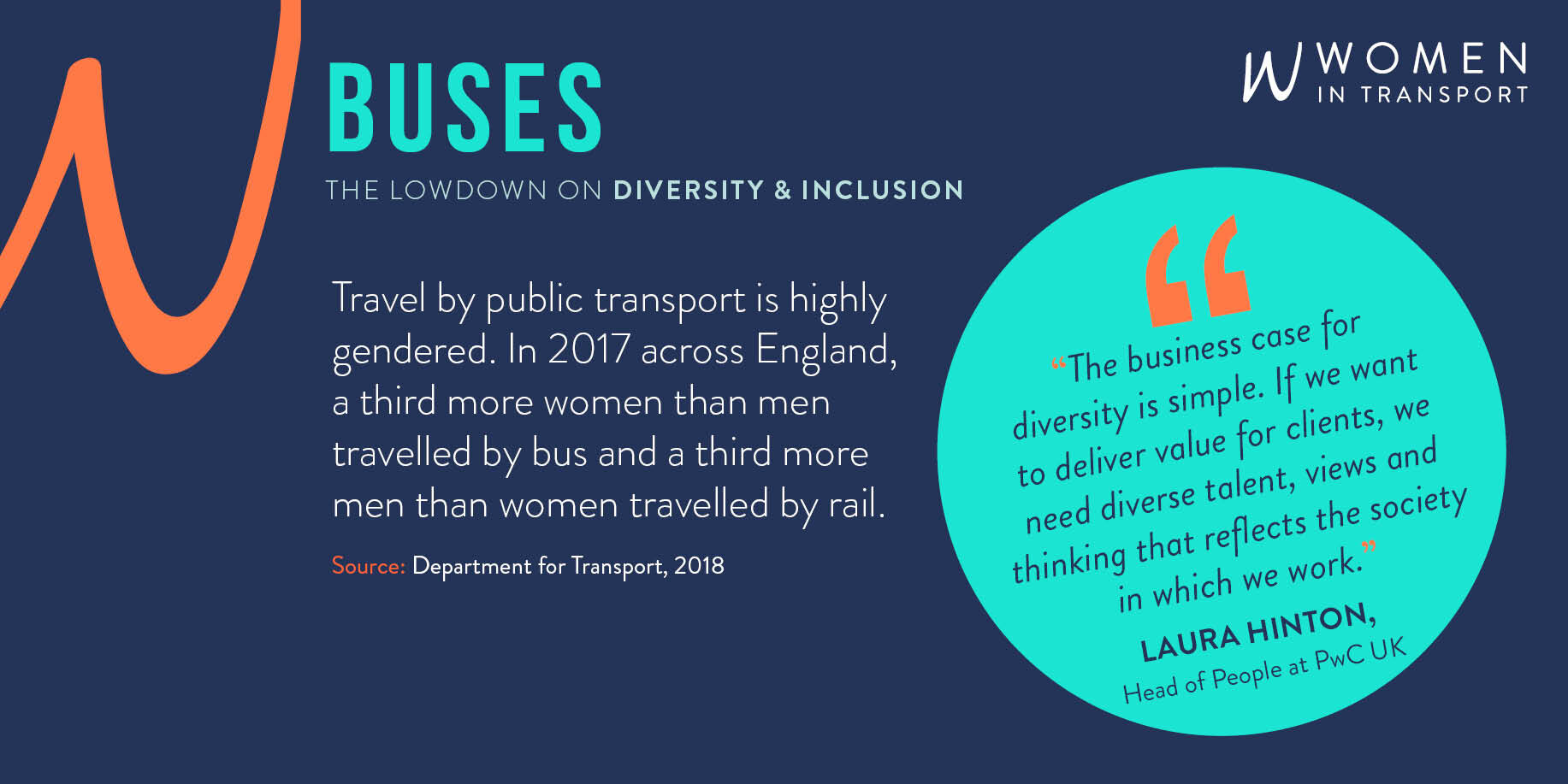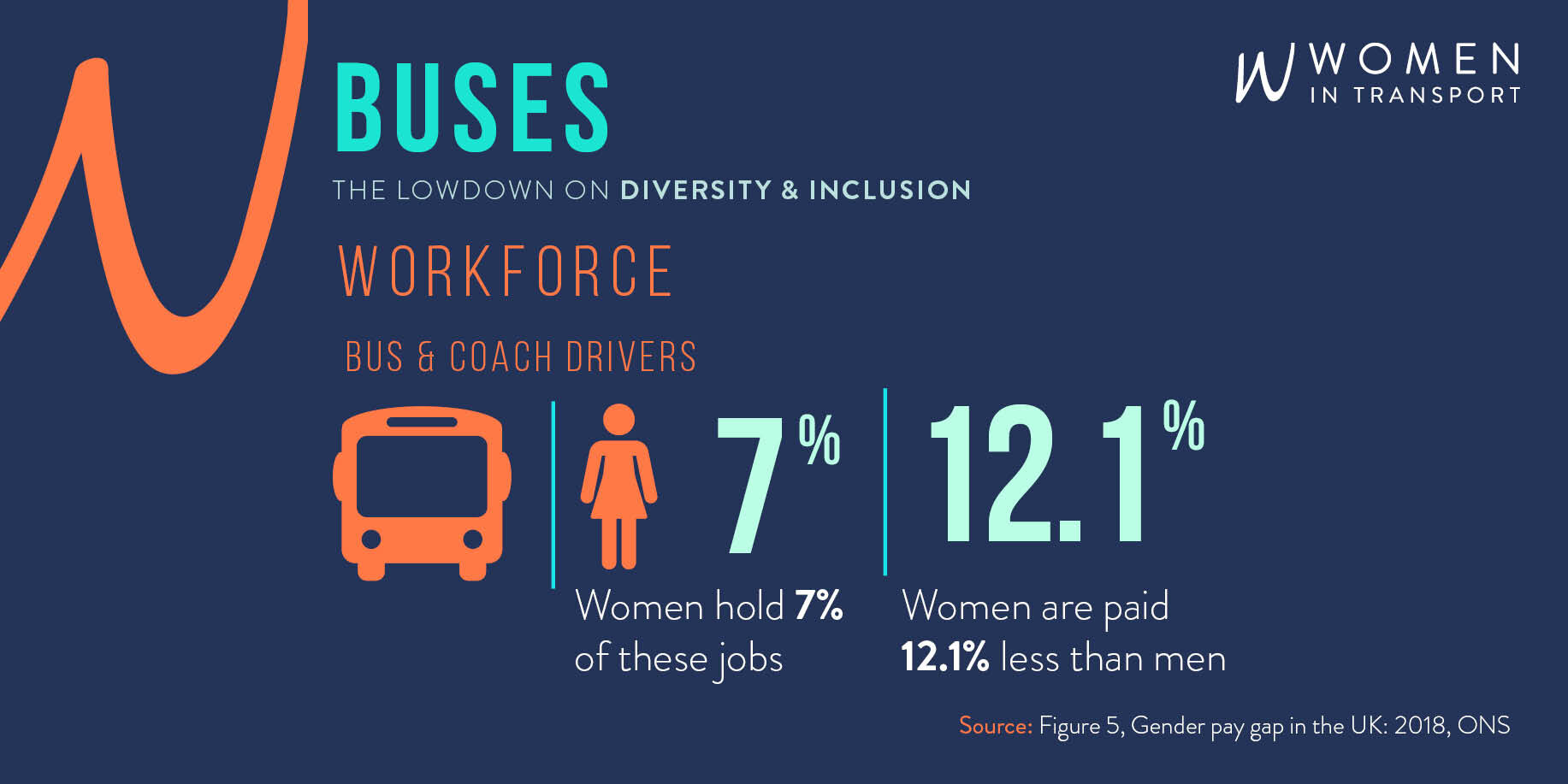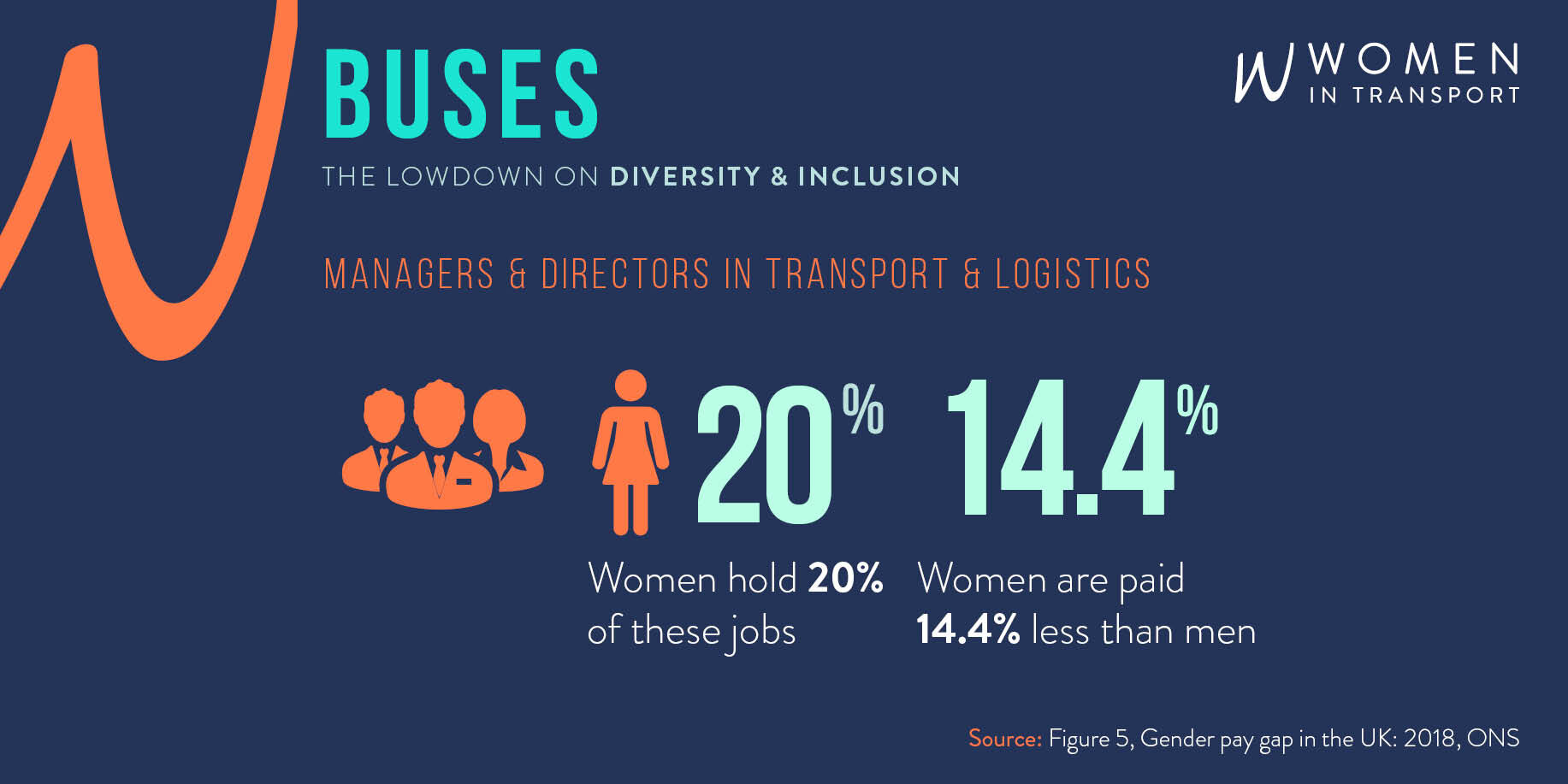Our Women in Transport Bus steering group is working to accelerate diversity in the bus industry through change and awareness. We have produced a factsheet to highlight the importance of diversity and inclusion in our sector and specifically focus on the gender gap in buses.
We know that diversity isn’t just a nice to have, or the right thing to do, it’s an essential ingredient in improving business performance. The business case is simple, to deliver outstanding performance our industry needs diverse talent and views that reflect the society in which we operate.
There is a huge body of evidence that more diverse and inclusive businesses perform better. Inclusion and diversity are a source of competitive advantage, and a key enabler of growth. Research by McKinsey in 2018 looked at more than 1,000 companies covering 12 countries, measuring not only profitability but also longer-term value creation, exploring diversity at different levels of the organisation, considering a broader understanding of diversity (beyond gender and ethnicity), and providing insight into best practices. The report reaffirms the global relevance of the link between diversity—defined as a greater proportion of women and a more mixed ethnic and cultural composition in the leadership of large companies—and company financial outperformance.
Women are significantly underrepresented in the UK transport workforce at only 20%, compared to the UK demographic which is 47% women. Nationally, only 7% of women are bus drivers (with some variances up to 10.5% across bus companies). This matters because bus drivers represent the majority of bus companies workforce, for example, eight out of ten employees in the Go Ahead UK bus business.
Nationally, the gender pay gap is 17.9% and, to be fair, buses doesn’t do badly in this respect with many reporting gender pay gaps well under 10%. But we still have much to do as a sector to improve perceptions and drive change. Go-Ahead Group is one of the companies recognising the imperative for change. They have set a target to increase representation of women across their bus workforce from 11% to 20% by 2025 and has launched a Women in Bus network to support the promotion of women in the company through positive role models. They recognise that diversity and inclusion makes sense and that their current workforce does not represent the customers that buses serve: 55% of bus passengers are women nationally, rising to 70% in London.
When it comes to gender equality, companies today suffer a ‘knowing-doing gap’. Most executives know how strong the empirical evidence is that proves the link between fostering more diverse mindsets and achieving superior financial performance. But progress is still too slow. Achieving real change requires committed leadership at the top and sustained effort to shift mindsets and correct hidden biases across the organisation. Purpose driven companies that create value for society as well as for shareholders build from a foundation of diversity and inclusion.
Dominic Barton Senior Partner, McKinsey & Company
2018 FTSE women leaders: Hampton-Alexander review
Women in Transport: Bus includes representatives from Brighton & Hove Buses, HCT Group, UNO, We are Buzz, RATP Dev, National Express, Stagecoach. It is led by Chloe Leach O’Connell and Sonya Byers. If you would like to find out more or get involved, please contact Sonya at sonya@womenintransport.com.
Factsheet designed by Anna Spurling.
Follow us @transportwm on Twitter, on Linkedin at Women in Transport for events, news and updates





